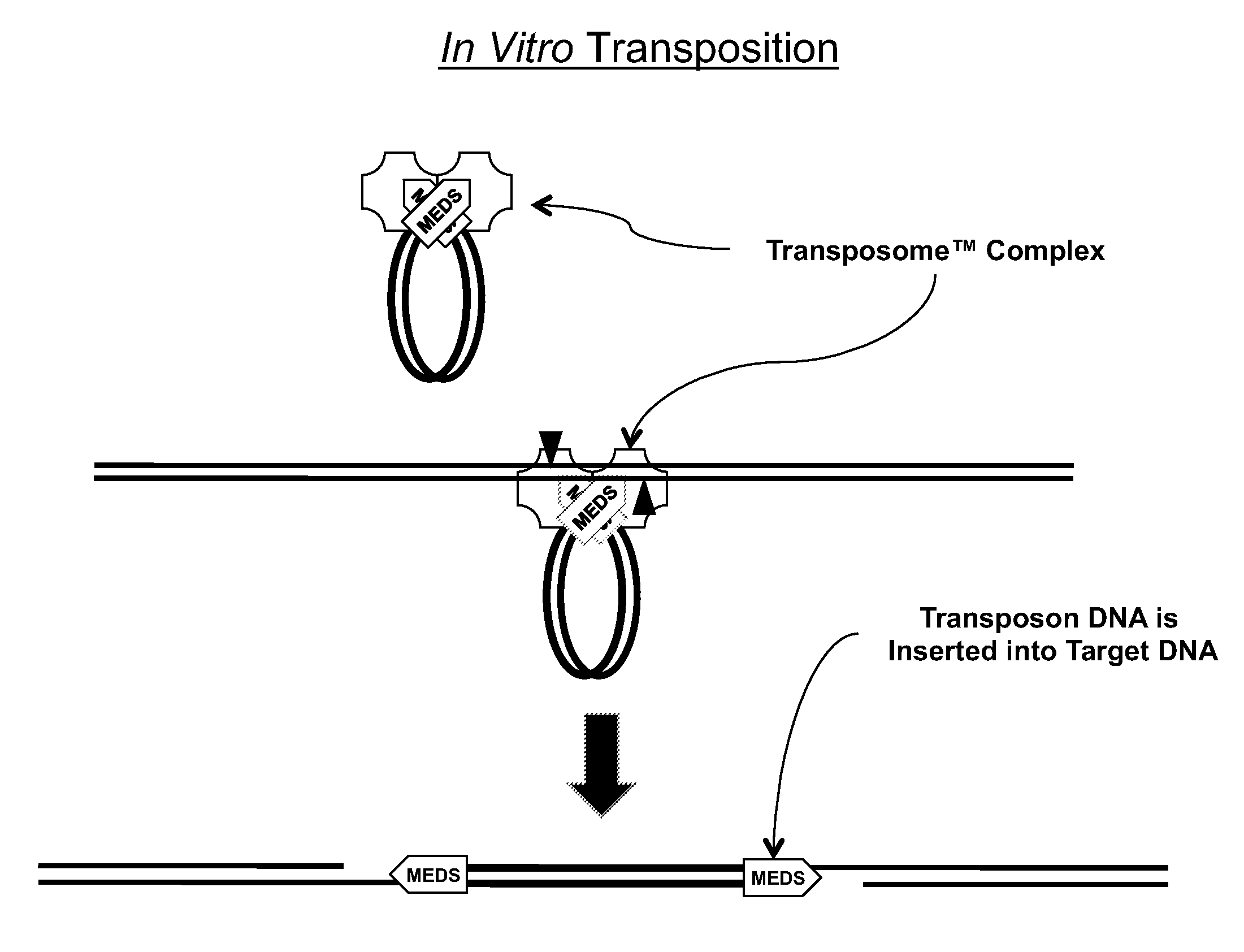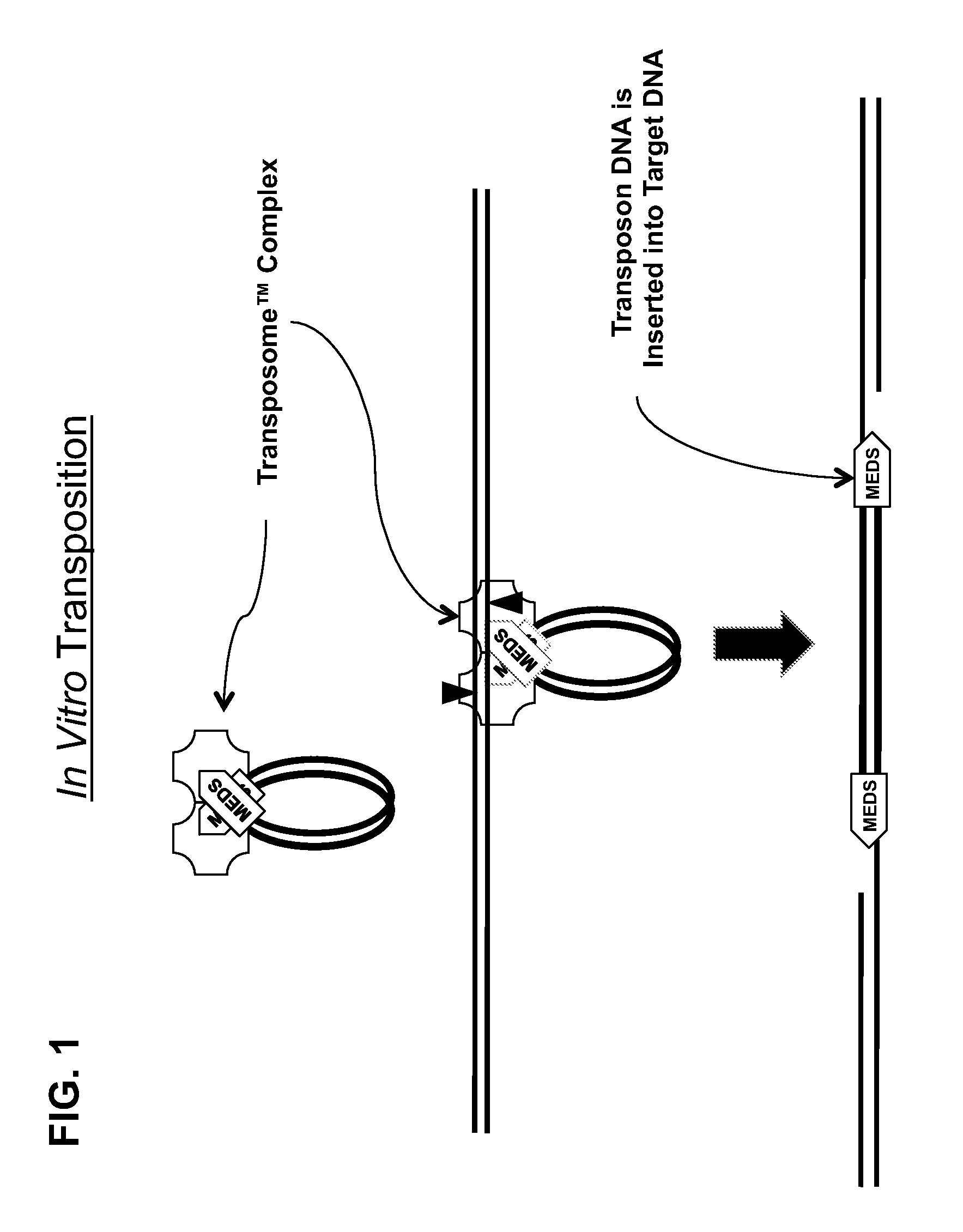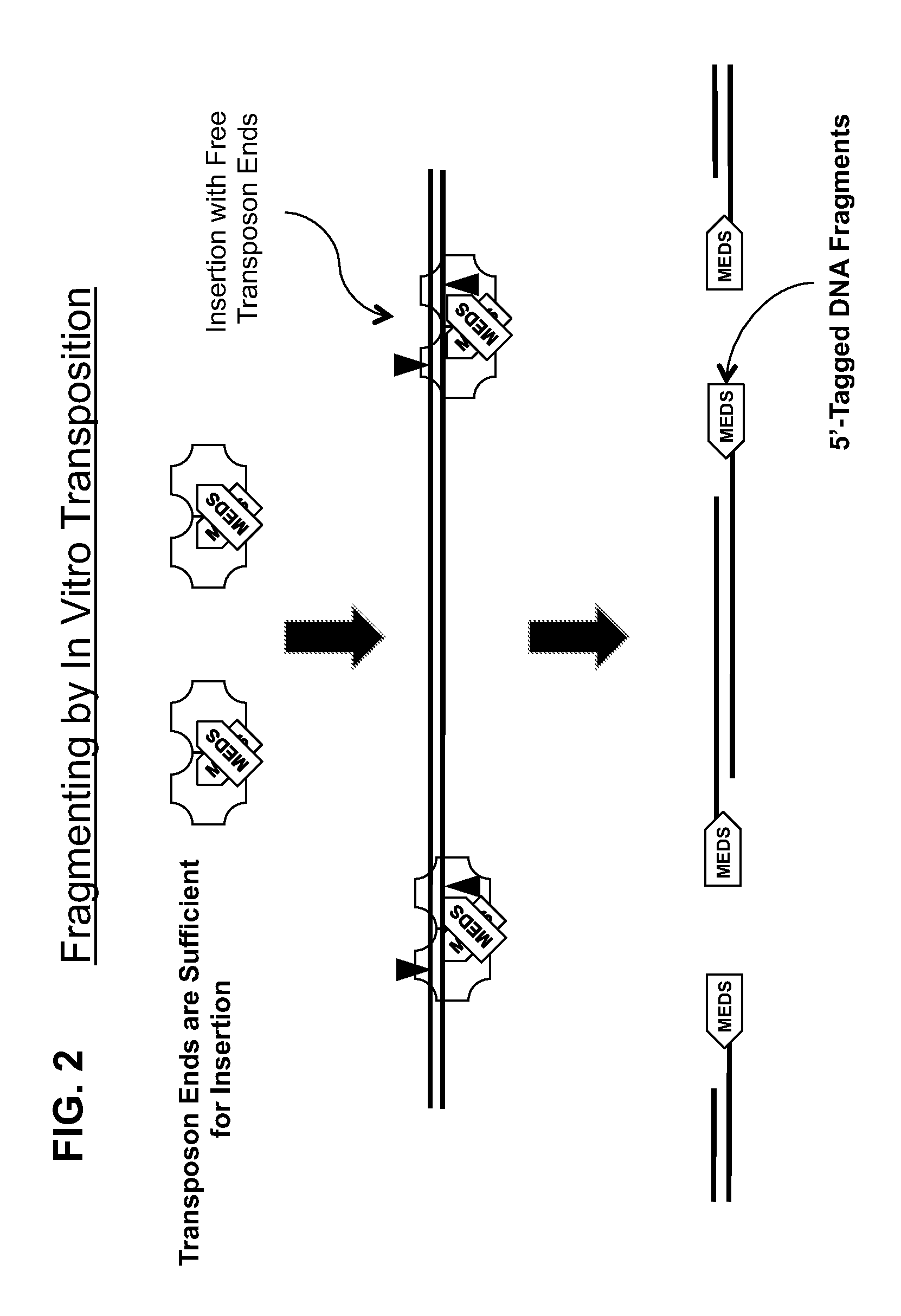Transposon end compositions and methods for modifying nucleic acids
- Summary
- Abstract
- Description
- Claims
- Application Information
AI Technical Summary
Benefits of technology
Problems solved by technology
Method used
Image
Examples
embodiments
Methods Embodiments
[0161]All of the embodiments of the methods of the present invention disclosed herein use an in vitro transposition reaction to simultaneously break a target DNA into fragments and join a tag to the 5′-end of each fragment. Since all of the methods are related, unless otherwise specifically stated with respect to a particular embodiment, a method that is present herein with respect to one embodiment can also be used with another embodiment described herein. All of the embodiments of the methods disclosed herein that use an in vitro transposition reaction can be performed by assembling the reaction using either separate transposase and transposon end compositions or a single transposome composition comprising a stable complex formed between the transposase and the transposon end composition. Therefore, it will be understood that any method that describes the use of a transposase and a transposon end composition could also use a transposome composition made from the...
experimental examples
[0377]The present invention is further defined in the following Examples. It should be understood that these Examples, while indicating preferred embodiments of the invention, are given by way of illustration only. From the above discussion and these Examples, one skilled in the art can ascertain the essential characteristics of this invention, and without departing from the spirit and scope thereof, can make various changes and modifications of the invention to adapt it to various usage and conditions.
[0378]Standard molecular biology techniques used are well known in the art and are described by Sambrook, J., Fritsch, E. F. and Maniatis, T., Molecular Cloning: A Laboratory Manual, Second Edition, Cold Spring Harbor Laboratory Press, Cold Spring Harbor, N.Y. (1989).
Definitions, Nomenclature and Abbreviations Used in the Examples
[0379]“pMETS” refers to the 19-base 5′-phosphate-containing single-stranded transposon end oligonucleotide that exhibits the EZ-Tn5™ transposon end sequence:...
example 1
In Vitro Transposition-Mediated DNA Fragmentation and 5′-Tagging Using EZ-Tn5™ Transposase and the EZ-Tn5™ Transposon End
[0415]The following reaction mixture was assembled:
xwater to a final volume of 50 microliters5microliters10X EZ-Tn5 ™ Transposition Buffer1microgramtarget DNA in 1 to 40 microliters2microliterspMEDS (25 micromolar)*2microlitersEZ-Tn5 ™ Transposase (at 10 units per microliter)50microliters*In some embodiments, two different pMEDS transposon ends that each additionally exhibits a different arbitrary sequence in its respective 5′-portion of the transferred transposon end, 5′-of the transferred transposon end sequence (FIG. 4).
[0416]After mixing, the reaction was incubated for 1 hour at 37° C. The reaction was stopped with 10 microliters of stop solution (15% sucrose, 66 mM EDTA, 20 mM TRIS, pH 8.0, 0.1% SDS, 0.9% Orange G [Sigma 0-7252], and Proteinase K at 100 micrograms per ml), mixed, and heated at 50° C. for 10 minutes.
[0417]DNA was analyzed by 1% agarose gel ele...
PUM
| Property | Measurement | Unit |
|---|---|---|
| Current | aaaaa | aaaaa |
| Digital information | aaaaa | aaaaa |
| Temperature | aaaaa | aaaaa |
Abstract
Description
Claims
Application Information
 Login to View More
Login to View More - R&D
- Intellectual Property
- Life Sciences
- Materials
- Tech Scout
- Unparalleled Data Quality
- Higher Quality Content
- 60% Fewer Hallucinations
Browse by: Latest US Patents, China's latest patents, Technical Efficacy Thesaurus, Application Domain, Technology Topic, Popular Technical Reports.
© 2025 PatSnap. All rights reserved.Legal|Privacy policy|Modern Slavery Act Transparency Statement|Sitemap|About US| Contact US: help@patsnap.com



